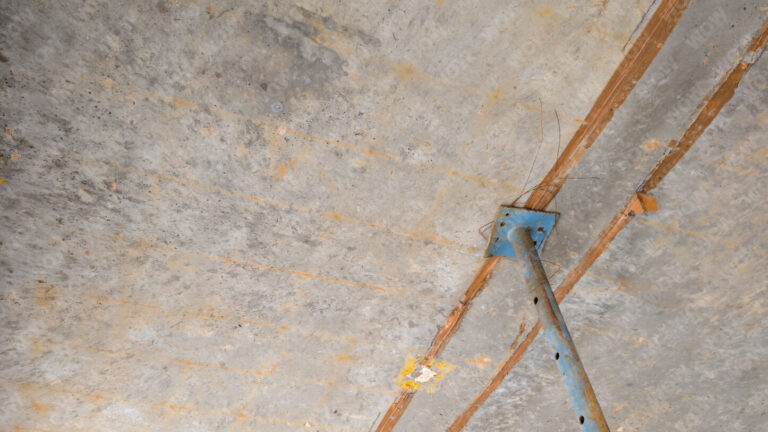In architecture and construction, formwork is not just a tool but the unseen framework upon which a structure rises. Concrete, for all its strength, requires temporary support during its earliest hours. The moment when this support can be safely withdrawn — known as striking time — is critical. Striking too soon can lead to collapse or deformation; striking too late results in delays and unnecessary costs. Understanding this balance, and choosing the right formwork materials, is essential for modern builders.
What is Formwork in Construction?
Formwork is the temporary mould into which concrete is poured and held until it gains enough strength to stand on its own. It shapes beams, slabs, columns, and walls. The choice of formwork boards, formwork panels, and formwork sheets defines not only the precision of the finish but also the safety and economy of the project. Traditional systems use timber and shuttering plywood, but more advanced systems now rely on engineered panels and plastic formwork sheets for durability and reusability.
The Purpose of Striking Formwork
Striking time is the interval after pouring concrete when formwork is removed. The objective is simple: support the structure only as long as necessary, then release it without damaging the concrete. Correct striking ensures:
- Stability of slabs, beams, and columns
- Smooth surfaces without cracks or deformation
- Faster project cycles through timely reuse of formwork sheets and boards
- Cost efficiency by maximising the lifecycle of formwork panels
The striking process is therefore both a matter of engineering calculation and material selection.
Factors Affecting Striking Time
The striking of formwork depends on several critical variables:
- Grade of Cement and Mix Proportions
Higher strength cement and well-proportioned mixes accelerate setting time. - Ambient Temperature and Humidity
Warm weather speeds curing, while cooler conditions slow it. Moisture retention is vital for preventing cracks. - Type of Structural Element
Columns and vertical supports reach strength faster than slabs, which require longer curing. - Formwork Materials
The efficiency of formwork boards, whether shuttering plywood or recycled plastic sheets, influences how easily panels can be removed without surface damage. - Load Considerations
Whether the element is designed for early loading impacts how quickly formwork may be removed.
Recommended Striking Times
The Indian Standards (IS 456:2000) provide guidelines for striking time, though site conditions can alter the exact schedule:
- Vertical formwork (columns, walls, sides of beams): 16 to 24 hours
- Slabs (props left under): 3 days
- Beam soffits (props left under): 7 days
- Slabs (props removed): 7 days for spans up to 4.5m; 14 days for longer spans
- Beams (props removed): 14 to 21 days, depending on span
The general principle is that vertical elements are struck early, while horizontal load-bearing structures require longer curing.
The Process of Safe Striking
Removing formwork demands as much attention as its installation. The following sequence ensures safety and precision:
- Check the Concrete Strength
Before removing formwork sheets, confirm the concrete has reached the required compressive strength, usually 70 percent of its design strength. - Begin with Non-Load Bearing Members
Remove side panels of beams, walls, and columns first. These do not affect structural stability. - Proceed to Slabs and Soffits
Remove props only after verifying that the slab strength is sufficient to support its own weight and imposed loads. - Avoid Shock and Vibration
Strike formwork boards gently to avoid surface damage or internal cracks in the concrete. - Inspect and Reuse
Clean and repair formwork panels immediately to extend their life for subsequent cycles.
Common Mistakes in Striking Formwork
- Premature Removal
Leads to deflection, cracks, or total collapse. - Delayed Removal
Causes project delays and reduces reuse efficiency of formwork plywood or boards. - Poor Material Handling
Rough striking damages shuttering plywood and accelerates its wear. - Ignoring Weather Conditions
Striking in cold or wet conditions without proper curing risks compromised structural strength.
The Role of Material Choice in Striking
Formwork materials define how easily striking can be done without damage. Traditional shuttering plywood and shuttering boards are prone to swelling, edge damage, and reduced reusability when exposed to moisture. Weather resistant plywood and even waterproof-labelled variants often fail after a few uses on sites with heavy rainfall or extreme temperatures.
Plastic formwork sheets and recycled plastic boards offer a superior alternative. They do not absorb moisture, maintain dimensional accuracy, and can be reused many more times than conventional plywood. WoWBoards, for instance, are engineered to handle multiple cycles without warping or chipping, ensuring safer and smoother striking every time.
Why WoWBoards are Ideal for Modern Projects
- Extended Life
Each panel of WoWBoards provides over 50 repetitions when handled properly, compared to 8 to 10 repetitions from the best shuttering plywood. - Consistency in Performance
Unlike centring plywood, WoWBoards maintain uniform thickness and dimensional accuracy across their lifespan. - Ease of Striking
Panels release smoothly from concrete surfaces without sticking or splintering, reducing labour effort. - Sustainability
Made from recycled plastic sheets, WoWBoards help divert waste from landfills and reduce deforestation caused by plywood demand. - Cost Efficiency
Though the initial price may seem higher than shuttering sheets, the cost-per-use is significantly lower, making WoWBoards the most economical choice for builders seeking long-term savings.
Conclusion
Striking formwork is not merely about timing; it is about understanding the interplay between design, material, and environment. The safest and most efficient striking comes from choosing formwork boards that are reliable, durable, and sustainable. Traditional shuttering plywood, even when marketed as waterproof, struggles under the demands of India’s diverse climate.
WoWBoards stand as the evolution of formwork materials, offering builders the assurance of safety, cost savings, and environmental responsibility. In an era where efficiency and sustainability must converge, WoWBoards redefine what formwork in construction can achieve.

